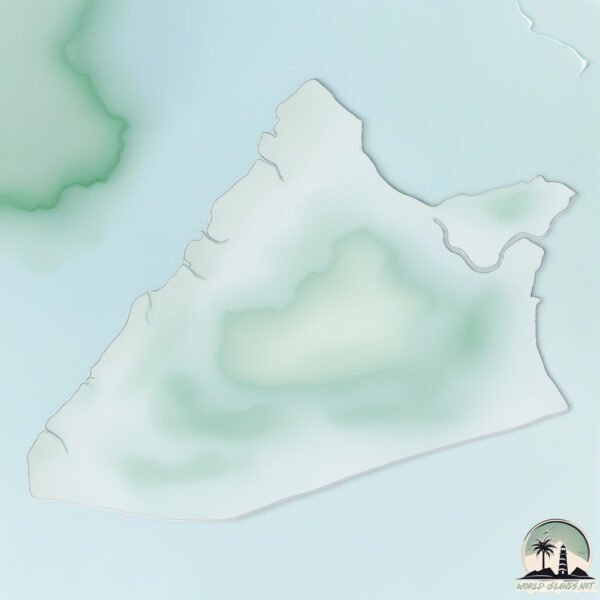Welcome to Bonny , a Tropical island in the Gulf of Guinea, part of the majestic Atlantic Ocean. This guide offers a comprehensive overview of what makes Bonny unique – from its geography and climate to its population, infrastructure, and beyond. Dive into the details:
Geography and size of Bonny
Size: 218.1 km²Coastline: 99.8 kmOcean: Atlantic OceanSea: Gulf of GuineaContinent: Africa
Bonny is a Large Island spanning 218 km² with a coastline of 100 km.
Archipel: –
Tectonic Plate: Africa – One of the world’s largest tectonic plates, covering the African continent and parts of the surrounding oceans, known for its stability with some active rift zones.
The geographic heart of the island is pinpointed at these coordinates:
Climate and weather of Bonny
Climate Zone: TropicalClimate Details: Tropical Rainforest ClimateTemperature: Hot
Climate Characteristics: This climate is typified by heavy rainfall throughout the year, high humidity, and consistently high temperatures, leading to lush rainforests and rich biodiversity. Seasonal temperature variations are minimal.
Topography and nature of Bonny
Timezone: UTC+01:00Timezone places: Europe/ParisMax. Elevation: 19 m Mean Elevation: 9 mVegetation: Evergreen Broadleaf ForestTree Coverage: 55%
The mean elevation is 9 m. The highest elevation on the island reaches approximately 19 meters above sea level. The island is characterized by Plains: Flat, low-lying lands characterized by a maximum elevation of up to 200 meters. On islands, plains are typically coastal lowlands or central flat areas.
Dominating Vegetation: Evergreen Broadleaf Forest
Vegetation: 14 vegetation zones – Exceptionally Diverse Island
Infrastructure and Travelling to Bonny
Does the island have a public airport? no .
Does the island have a major port? yes .
The mean population of Bonny is 646 per km². Bonny is Densely Populated. The island belongs to Nigeria .
Continuing your journey, Akwabana Island is the next notable island, situated merely km away.
Nigeria Most Organised Place - Bonny Island NLNG Residential Area
Bonny Island - The Residential Area of the Nigeria Liquefied Natural Gas is one of the Most Beautiful and well-organized places to ...
Nigeria Most Organised Place - Bonny Island NLNG Residential Area
Bonny Island - The Residential Area of the Nigeria Liquefied Natural ...
Bonny Island - The Residential Area of the Nigeria Liquefied Natural Gas is one of the Most Beautiful and well-organized places to ...
See What Bonny Island Nigeria Looks Like Today (PART 1)
Bonny is a city located in Rivers State, Nigeria. It is located on the ...
Bonny is a city located in Rivers State, Nigeria. It is located on the Bonny River, which is a tributary of the Niger River. The city is ...
Nigeria's Waterside Neighborhood | Bonny Island
This is how Bonny Island waterside looks like Music and template I use ...
Nigeria is classified as Emerging region: G20: Group of Twenty – Major economies comprising both developed and emerging countries, representing the world’s largest economies. The level of income is Lower middle income.
News – Latest Updates and Headlines from Bonny
Stay informed with the most recent news and important headlines from Bonny. Here’s a roundup of the latest developments.
Loading...
Please note: The data used here has been primarily extracted from satellite readings. Deviations from exact values may occur, particularly regarding the height of elevations and population density. Land area and coastline measurements refer to average values at mean high tide.

